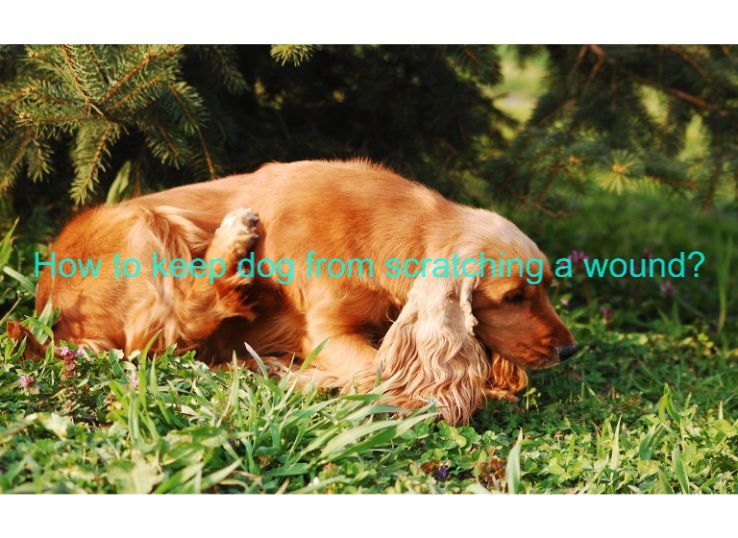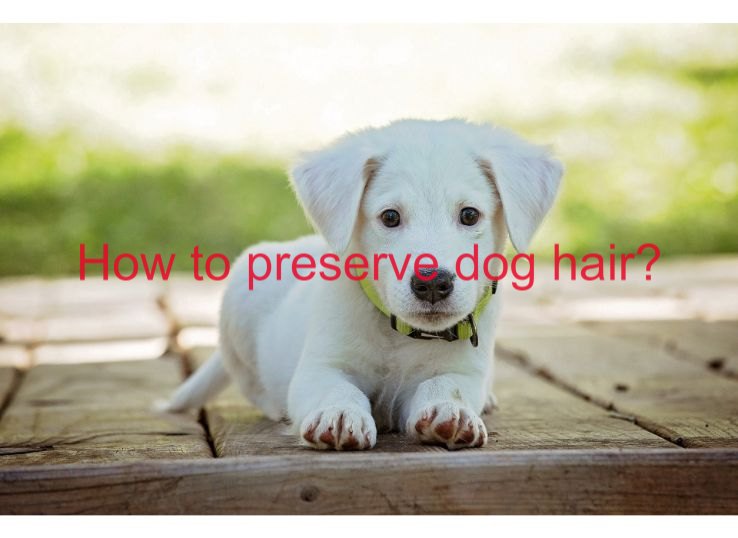How to Keep Dog from Scratching a Wound? (New)

We have all become aware of not rubbing our wounds having grown up. Dogs do not understand this concept. The dogs cannot understand what we say and scratch their wounds, causing trouble. So, in this article, you will learn how to keep dog from scratching a wound.
Dog owners should have a basic understanding of first aid for dogs. The purpose of this is not to replace veterinary care but rather to provide a quick and urgent intervention. Just as much as it is important to provide your dog with proper care at home, it is equally important to take them to the vet whenever necessary.
Continue reading to find out what you can do to prevent your dog from licking a wound.
Table of Contents
How to Keep Dog from Scratching a Wound? 6 Best Techniques
1. Shaved hair
Often, the hair around a wound or medical treatment is shaved off when your dog is in pain. In addition to its itchy and sensitive nature, your dog’s skin can become extremely sensitive when the hair begins to regrow.
Ingrown hairs can cause infections and serious complications if your dog scratches the wound. To prevent your dog from scratching the problem area, there are a few things you can do. While your dog may look adorable wearing a t-shirt, it can also have another purpose.
This T-shirt will protect the wound from paws, teeth, and other objects, such as fingers or other objects. This may seem like an effective temporary measure, but dogs who are committed to scratching through the T-shirt will find a way to do it. The use of a bandage is another obvious solution.
Additionally, your dog will not be able to scratch the wound, which reduces the possibility of secondary infections. In addition to preventing the wound from being scratched, reducing airflow will help it heal. Although short-term, this is an effective and quick solution, and bandages can be removed and replaced easily.
2. Dress him up in an Elizabethan collar
An Elizabethan collar will prevent her from scratching any wound on her head or upper neck. The Elizabethan collar resembles a cone with a small end that wraps around her neck, while the large end protrudes toward her face.
A collar like this prevents dogs from putting their mouths on their bodies. It is important not to impose too many restrictions on these methods. The healing process of a wound requires oxygen in addition to being snug.
3. Ointments and creams
There could be environmental factors that cause your dog to scratch the wound site frequently. The open-air may allow the wound to heal faster, but it also may itch because of all the air getting into it. Dogs scratch into dirt and grit even more when they’re outside. A dog who is recovering from a wound will try to scratch it while it becomes itchy.
The wound can be soothed by applying a cold compress. Numbing the wound area will prevent it from scratching. To reduce the dog’s desire to scratch, you can apply creams and ointments regularly on the wound. A no-lick spray can also be sprayed on the problem area.
This step is essential because their tongue is likely to be full of bacteria, and moisture is the perfect environment for these microbes to prosper. No-lick spray is used to reduce the temptation for licking or scratching by making the area taste unpleasant. There are limits to how effective this will be, and it will only work for very short periods.
4. Put dog boots on her.
If your dog licks the wounds on her legs, you can prevent her from doing so by buying boots for her. Veterinary offices, pet stores, or online retailers sell these footwear items. You can wear them over bandages but be sure you buy a larger size than you usually would if you are going to wear them over bandages. They must fit correctly. Keeping them on is important, but removing them will result in more sores.
5. Painkillers Can Also Help
Nerves that register pain also register itchiness. Painkillers, therefore, can sometimes reduce itching. Painkillers are available for dogs, and you should consult your veterinarian to determine which one is best for your pet. Veterinary practitioners may often dismiss the issue of wound scratching. It is important to insist that help be given.
6. Try Ice Therapy
The purpose of ice therapy is to reduce inflammation and cool down the affected area by holding an ice pack against it. When nerve endings are cooled, they become less itchy and calm. When applying the ice pack, remember to only leave it on for ten minutes each time.
An ice pack placed on an injury for too long will compromise the blood supply to the area, resulting in the lesion not healing. You can apply a cold pack for ten minutes, followed by a hot pack for ten minutes, if there is still a lot of inflammation-causing itching.
The process should be repeated at least twice. If you have the time, you can use this therapy up to three times per day.
How much prevention is important?
There are several effects of prevention. The most noticeable advantage is that it saves your pooch from further pain and anxiety. But that, consecutively, will save you from ample vet bills and give you a healthier dog.
The danger of further infection not only intimidates your dog’s life; avoiding it could also stop other pets or kids from contracting disgusting infections or bacteria. Thus, for a healthier and happier dog, inexpensive vet bills, and a safer atmosphere for you and your loved ones, prevention is the way forward without any doubt.
Protecting your dog as soon as possible is important for preventing vet care bills. Start associating insurance plans from chief insurers like Healthy Paws as well as Embrace and save more than $270 a year.
Prevention plus Precaution
Dogs are certainly going to turn out with wounds as well as scratches; it is their nature! But, you must stop your dog from doing any further harm by scratching the wound. Besides, scratching can cause horrible infections, eliminating the healing process and creating new health dangers.
You can utilize anti-itching sprays as well as creams to cover the wound. Additionally, you can also consider cold compresses and topical treatments to decrease the inducement of scratching.
All these actions will be operative, but only in the short term. So, monitoring your canine’s wound during healing is important and informing your veterinarian if you see symptoms of infection or difficulties.
Frequently Asked Question
Q: Can I put Vaseline on my dog?
Despite what you may have heard, Vaseline is not toxic to dogs. Your dog can also lick the toner off their skin or paws, so it’s not the best choice. If your puppy consumes enough, they might experience an upset stomach, which could result in vomiting or diarrhea.
Q: What can you do to prevent your dog from scratching the incision?
A properly fitted Elizabethan collar is the only surefire way to prevent a wound from being licked, especially at night or when your dog is not being watched.
Q: How to keep a dog from scratching an incision?
There is an anti-itching cream you can apply to the wound site to alleviate itching. Apply ointments or creams to the wound regularly by picking them up at your vet’s or online. Your dog will be less tempted to scratch after they are dull and numb the wound site.
Conclusion: How to Keep Dog from Scratching a Wound?
Dogs who play with their full energy are usually at risk of getting injured. Taking care of them after medical treatment requires some knowledge and tips. Make sure that the wound is protected after surgery and that it heals as quickly as possible.
Dogs should not be allowed to scratch wounds as this can result in infections. During your dog’s healing period, be sure to watch the wound for signs of infection or complications.



